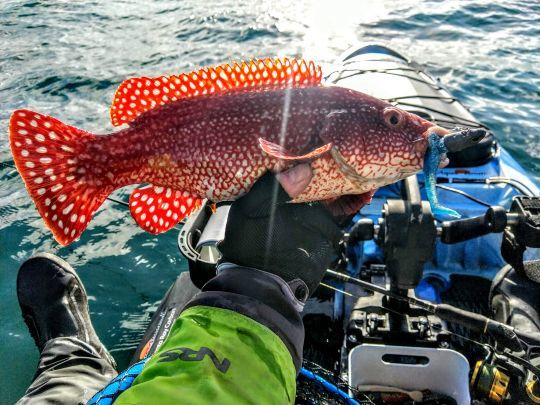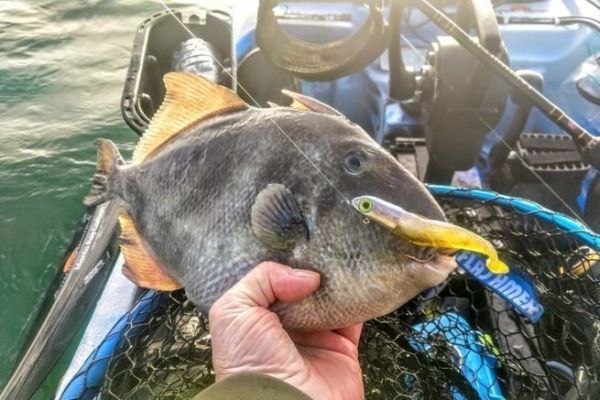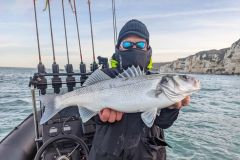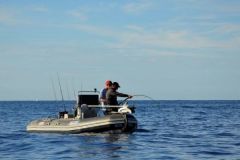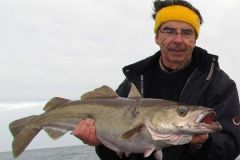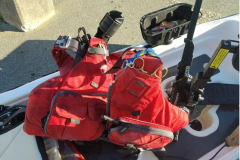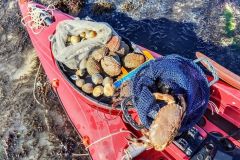December, January and February do not mean that you have to leave your kayak in the garage. The sea bass has left on its spawning grounds, but on the tip of Brittany, it is still possible to enjoy yourself when a window of opportunity presents itself. Let's see what we can meet, this list is not exhaustiveâeuros¦
Pollock, a winter fishery
The species targeted in priority during these winter months is of course the pollack (pollachius pollachius). This species rarely lives alone, on our spots it is often small groups that move in search of food. They feed on small fish, pout, horse mackerel, gobies and especially sandeels. They do not disdain either cephalopods and crustaceans, crabs and shrimps. At the time of reproduction, the pollack gather in large schools and descend to depths that are inaccessible with our kayaks, 150 to 300 meters deep. On our coasts this migration will depend on the water temperature, but it is around mid-February.
As a result, knowing its feeding habits, we will look for it rather with soft lures, imitations of sand eels or small fishes, the sizes from 70 to 140 mm for the bodies are the most used. The exploited bottoms go from 20 to 50 m and we privilege the drop-offs of channels or wrecks if there are some. Compared to the rest of the year, the rigs are a bit stronger and the leaders must be at least 30/100. As already explained in a previous article, it is the elevator method which is the most suitable.
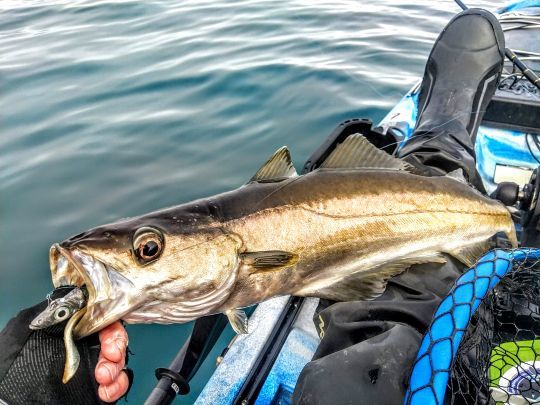
Fishing for cod
If you prefer to stay close to the bottom, the coveted species will be the cod (gadus morhua), of the same family of gadidae as the pollack. This species also goes offshore when the water is cold. In our area, apart from the wrecks, these hunting grounds are the ridins. These are wave-shaped hollows and bumps on the bottom, sculpted by the tidal currents. This fish is an opportunist and it will swallow everything that passes within its reach, as long as it drags on the bottom.
That's why you have to fish by scratching, with the risk of hooking. This fish has rather the head down and rarely follows a lure which goes up, except on the wrecks. The lures used are also soft lures as for the pollock, the favorite colors of winter that work are pink, yellow, red, flashy it's even better. These fish are generally 2 to 3 kilos for the biggest, not monsters, but what a delight in the plate.
We will also find a close cousin of the two previous species, the pout. It is found on the same spots and it is caught on the same lures. It is necessary to consume them fresh, do not put them in the refrigerator.
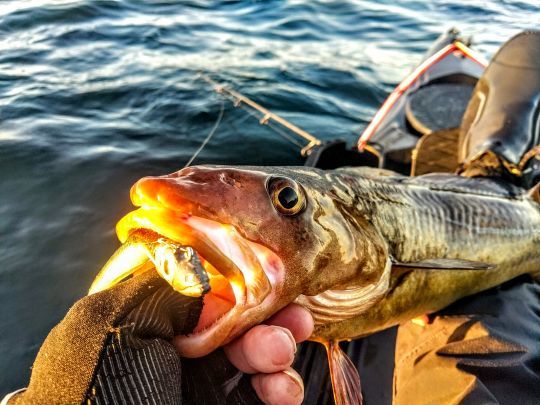
In winter, fishing for other species
No winter fishing without the search for cephalopods, they are very present on our coasts, octopuses, squids, cuttlefish, we can make very nice baskets, they love the coldâeuros¦ In the roadstead of Brest, some species are represented, as the gray sea bream, we make the most beautiful specimens in winter, before they enter spawning. There, we bring out the tenya/madai and kabura . We can boost the bait lures with cephalopod tentacle and a miracle bait that I use for many years, the scallop beard.
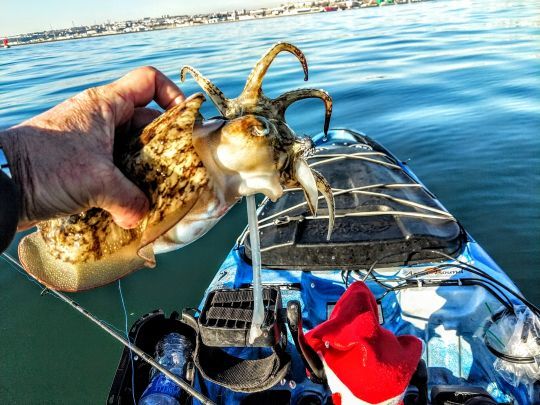
To finish the detailed review some by-catches are also possible such as gurnards, dogfish and triggerfish which arrived in the bay about thirty years ago and which now reproduces here. Be careful with your fingers with this fish, its jaw is formidableâ?¦ As you can see, don't put your kayak away, there are still some nice outings to be made, even in winter.
